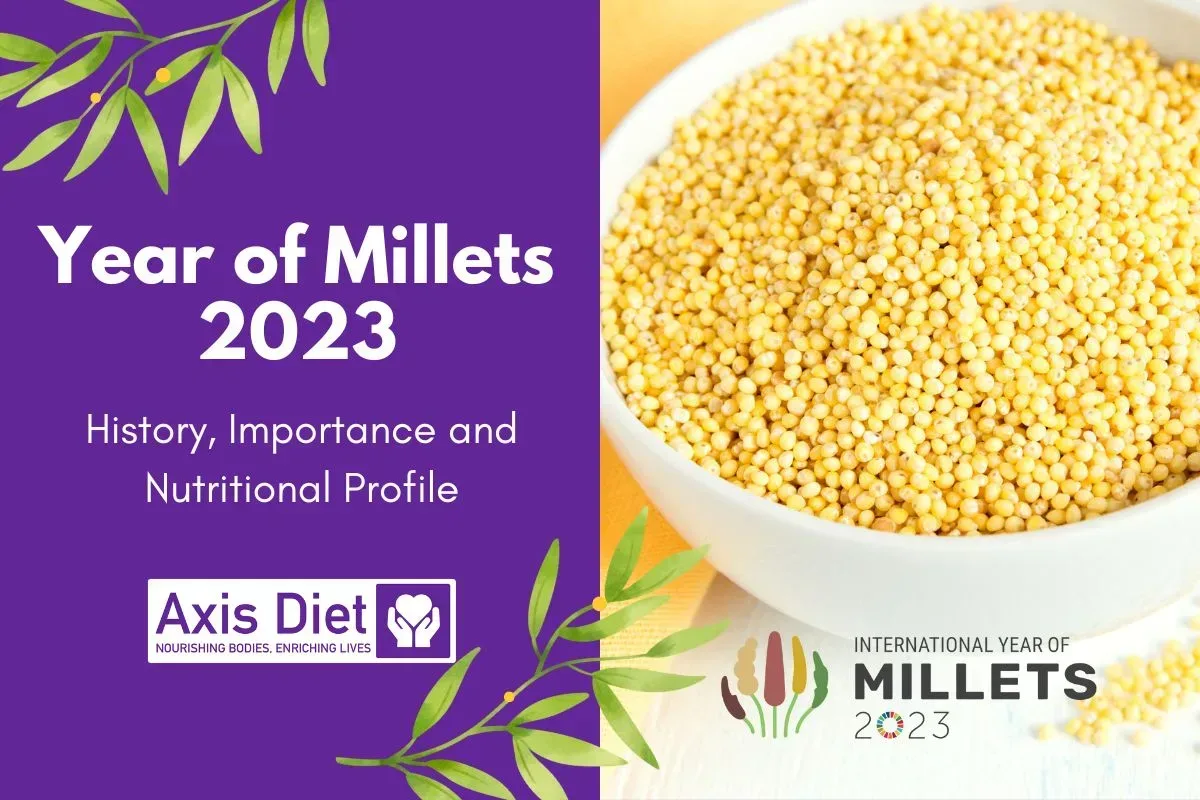In 2023, we celebrate the ‘Year of Millets’, bringing these ancient, nutrient-packed grains into the limelight. Millets are small-seeded grasses that have been part of human diets for thousands of years. As we continue our journey in health consciousness and sustainable living, it’s time we explore millets – their history, their importance, and their impressive nutritional profile.
Understanding Millets: More Than Just Grains
Millets, more than mere grains, have been a cornerstone of human nutrition and agricultural practices for thousands of years. Embracing their diversity and resilience gives us insight into their unique characteristics and unparalleled importance in our diet and the environment.
Variety: A Rainbow of Millets
Millets come in a variety of types, each with its own distinctive traits and unique nutritional profile. Let’s take a closer look at some of the most common ones:
- Pearl Millet (Bajra in Hindi): The most widely grown type of millet, pearl millet / bajra, is known for its high heat tolerance, making it an ideal crop in semi-arid tropical regions. Nutritionally, it is rich in proteins and minerals, particularly phosphorus, which plays a key role in energy production and body tissue repair.
- Finger Millet (Ragi in Hindi): Finger millet or Ragi is celebrated for its high calcium content, a nutrient essential for bone health. It also boasts a good balance of amino acids, making it an excellent protein source.
- Foxtail Millet (Kangni in Hindi): This fast-growing millet is revered for its protein and fiber content. Additionally, foxtail millet contains a significant amount of iron and magnesium, aiding in blood health and muscle function, respectively.
- Proso Millet (Chena in Hindi): Proso millet is drought-resistant, making it an ideal crop in dry, arid regions. Nutritionally, it is a good source of manganese, phosphorus, and niacin (vitamin B3), which are important for various body functions.
- Barnyard Millet (Jhangora in Hindi): Known for its short growing season, barnyard millet can produce a crop in just six weeks. This grain is rich in iron and zinc, important minerals for immune health and metabolism.
Resilience: Millets’ Battle Against Climate Change
Millets are tough grains. They are capable of growing in high-temperature environments and dry conditions where many other crops fail. This remarkable resilience makes them a lifeline for food security in many parts of the world, particularly in regions facing the brunt of climate change.
Drought-resistant and requiring little water, millets serve as an environmentally friendly grain choice. Their low water requirement means they can survive and flourish in areas where water resources are scarce, making them a critical crop in our bid to ensure global food security amidst changing climate patterns.
Moreover, millets are typically grown without pesticides. Their natural resistance to pests means fewer chemicals are needed during their cultivation, reducing their environmental footprint and preserving the health of the soil they grow in.
The unique qualities of millets – their nutritional profile, their resilience, and their ability to grow in harsh conditions – make them a vital ally in our efforts towards sustainable agriculture and healthy diets. By understanding and valuing these grains, we can promote a food system that benefits our health and the health of our planet.
Benefits of Millets: Nourishment for Us, Nourishment for Earth
When it comes to nutrition, millets are a veritable powerhouse. But their value extends far beyond the nutrients they offer. They are champions of both our health and the health of our planet.
Health Benefits: Fibre, Antioxidants, and More
Millets are rich in dietary fiber. This not only aids digestion but also keeps us fuller for longer, preventing overeating and promoting weight management. The high fiber content also benefits heart health by helping lower cholesterol levels.
Moreover, millets are known for their high antioxidant content. They are rich in phenolic compounds, which play a vital role in preventing diseases like cancer, diabetes, and heart disease. Regular consumption of millets can strengthen your body’s defenses and promote overall health.
Environmental Benefits: A Sustainable Choice
Millets are not just good for us, they are good for the planet too. They require less water and fertilizer compared to other grains like rice and wheat. This makes them a more sustainable choice, particularly in regions where water resources are scarce.
They can also grow in poor soil conditions, and their deep root systems help improve soil fertility. By choosing millets, we are opting for a crop that supports biodiversity and promotes healthier soils.
Discover the Power of Ancient Grains
Millets are nutritional dynamos. They are gluten-free, making them an excellent choice for those with gluten intolerance or celiac disease. They are rich in essential amino acids, which are the building blocks of proteins, vital for body growth and repair.
Moreover, they’re a good source of B vitamins, particularly niacin (vitamin B3), vitamin B6, and folic acid. These vitamins play a crucial role in energy production, brain function, and the creation of red blood cells.
Each type of millet has a unique nutritional profile:
- Finger millet (Ragi in Hindi): It is high in calcium, which is essential for bone health and nerve function.
- Barnyard millet (Jhangora in Hindi): It is a good source of iron, vital for carrying oxygen in the blood, and zinc, which supports immune health.
- Foxtail millet (Kangni in Hindi): It is rich in protein, an essential nutrient for muscle growth and repair.
In addition to their nutrient content, millets have a lower glycemic index compared to other grains like wheat and rice. This means they release sugar slowly into the bloodstream, preventing sudden spikes and crashes in blood sugar levels. This makes them an excellent choice for people with diabetes or those looking to maintain steady energy levels throughout the day.
Conclusion
The ‘Year of Millets’ is an opportunity for us to rediscover these ancient grains. Their rich nutritional profile and environmental benefits make them a smart choice for our health and our planet. As we strive for sustainable living and improved health, let’s embrace the year of millets and make them a staple in our diets.






[…] Flour: Substitute regular flour with protein-rich alternatives like chickpea flour (besan) or millet flour in your recipes. This is an easy way to increase the protein content of your meals without making drastic changes […]
[…] the Indian government’s Ministry of Women and Child Development to spread awareness about the importance of nutrition and promote healthy eating. The entire month of September is dedicated to nutrition, with Rashtriya […]